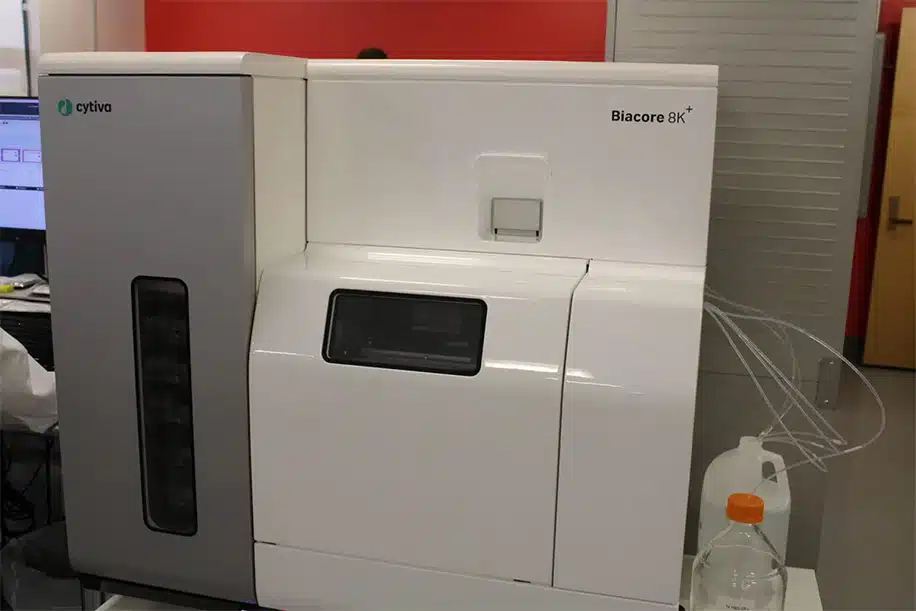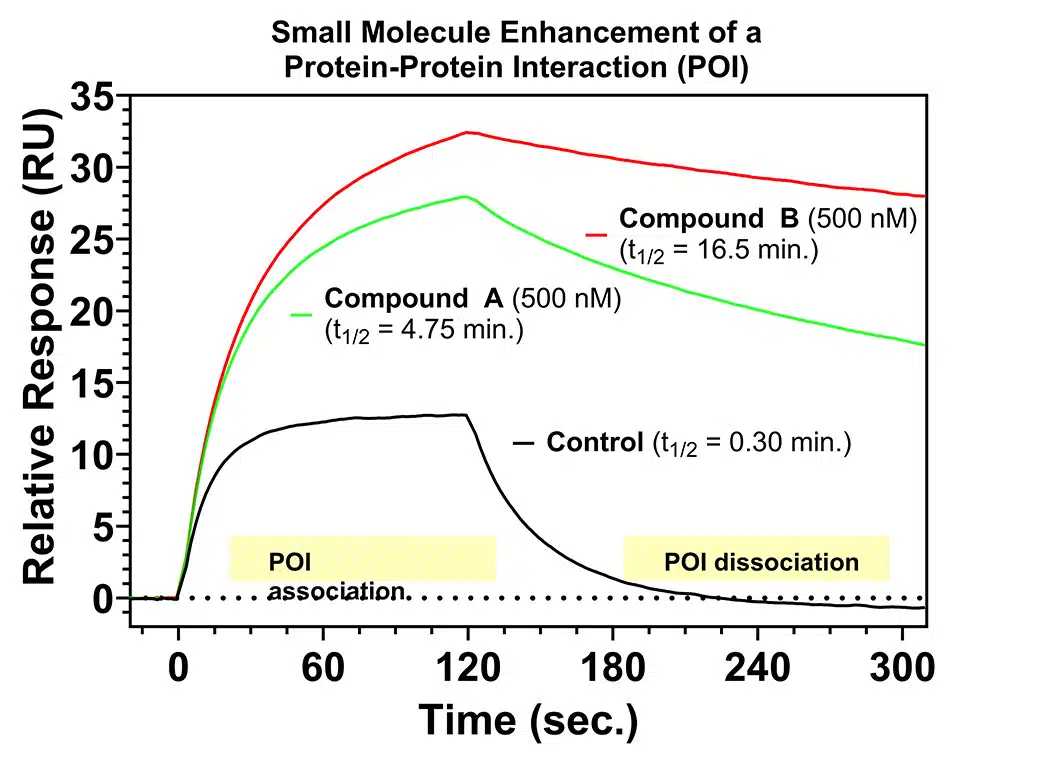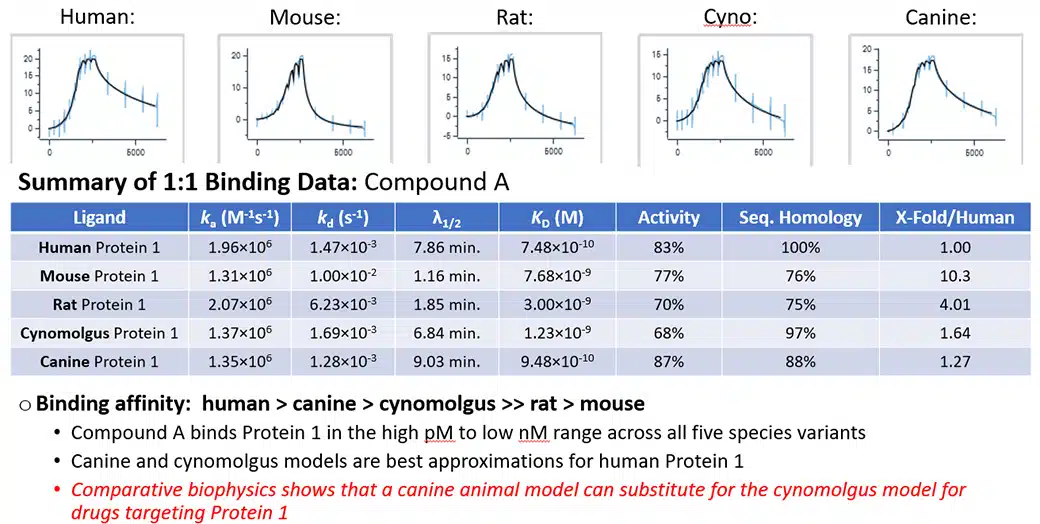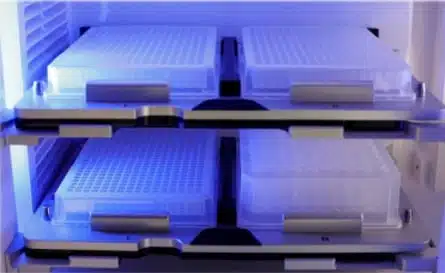
Introduction to Our Biacore Service
Biacore is a bioanalytical platform that utilizes Surface Plasmon Resonance (SPR) to detect changes in refractive index when a target molecule binds to an immobilized ligand. This detection is facilitated by three core components: a sensor chip, an SPR optical detection system, and a microfluidic cartridge.
The sensor chip's dextran-coated surface immobilizes specific biomolecules for interaction with molecules in a solution and the SPR detector then monitors changes during the binding and dissociation process. This data is recorded as sensorgrams for precise measurement of parameters such as binding affinity, kinetics, and biomolecule concentration.
Biacore's high sensitivity and detailed data output mean that Biacore assays will aid in pharmaceutical research, drug development, and protein interaction studies.
Core Benefits of Our Biacore Services
Tailored Assays
Key to our support, we provide customizable and tailored assays to each client's research goals, ensuring only relevant and accurate data for each application is received.
Real-Time Analysis
Monitor molecular interactions in real-time and gain information on binding kinetics.
Advanced Detection
Biacore assays enable the detection of even the lowest affinity interactions, our service is ideal for studying subtle binding events or weak interactions.
Label-Free Detection
Eliminate the need for fluorescent or radioactive labeling through the label-free nature of Biacore and reduce the complexity of assays while maintaining the native behavior of biomolecules.
Precision Characterization
Develop effective therapeutics through receiving detailed kinetic and affinity measurements for molecular interactions.
Streamlined Development
We provide the ability to efficiently collect data with our Biacore assay, accelerating your research timeline, and resulting in rapid decision-making.
Robust Data Outputs
Our Biacore service will minimize the chance of errors and ensure high-quality data that will facilitate reliable conclusions for your research.
Applications of Our Biacore Services for Drug Discovery: Small Molecule Drug Discovery
Fragment-Based Drug Discovery
Our Biacore service provides the ability to screen small molecular fragment libraries for their binding affinity to target proteins. With this you can identify the starting points for drug design and craft complex molecules with improved binding affinity.
Drug Discovery and Development
Accelerate drug development with our Biacore assay support and identify, optimize, and characterize potential drug candidates. The assessment of binding kinetics and affinity between drugs and target proteins will enable the discovery of more efficient and effective treatments.
Case Studies

Our Biacore services provide information on protein-ligand and protein-nucleic acid interactions. For protein-ligand studies, our assays evaluate molecule binding affinity and kinetics to target proteins, demonstrating therapeutic potential. In protein-nucleic acid interactions, we analyze real-time binding dynamics to reveal protein interactions with and regulation of DNA and RNA.
These case studies exemplify the versatility of Biacore's technology and its impact on understanding intricate biological processes.
Case Studies

SPR Quantification of PPI Modulators
SPR can be used to investigate and quantify the effects of both Protein-Protein Interaction (PPI) inhibitors, as well as enhancers such as PROTACS and Molecular Glues. PROTAC ternary complex systems can readily be reduced in complexity and assayed as bimolecular interaction pairs. In this example, we were able to show that both compounds A & B could behave as molecular glues and increase the dissociation rate of the PPI, with compound B representing a next generation improvement over compound A.

Comparative Biophysics: What animal model is best for drug development?
Binding affinity: human > canine > cynomolgus >> rat > mouse
- Compound A binds Protein 1 in the high pM to low nM range across all five species variants
- Canine and cynomolgus models are best approximations for human Protein 1
- Comparative biophysics shows that a canine animal model can substitute for the cynomolgus model for drugs targeting Protein 1

RNA Screening via SPR
- Conventional SPR methods account for non-specific binding to the matrix substrate, but not for non-specific target binding.
- Subtraction of a closely related reference RNA can separate target-specific vs. target non-specific binding.
- Additionally, specific vs. non-specific binding can be deconvoluted by varying the buffer ionic strength.
- (Adapted from Arney, J. W.; Weeks, K. M. Biochemistry 2022, 61, 1625-1632. https://doi.org/10.1021/acs.biochem.2c00177 )
Biotherapeutic Drug Discovery
Effectively develop biotherapeutic drugs, such as monoclonal antibodies, with our Biacore support which will aid in the development of disease-targeting antibodies that interact with disease-related proteins or antigens.
Antibody-antigen interactions can be analyzed via Biacore analysis which will reveal information about binding specificity, epitope mapping, and cross-reactivity. Crucial to the development of monoclonal antibodies and other biotherapeutics, this kinetic profiling will allow you to distinguish between antibody classes and their effectiveness.
We offer the ability to gather real-time data on association and dissociation rates to optimize drug concentrations and dosing schedules.
Understanding cellular behaviors relies on protein-protein interactions, the foundation of signalling pathways. By utilizing SPR (Surface Plasmon Resonance), real-time monitoring of these interactions offers insights into signalling cascades. This method facilitates the exploration of protein binding, dissociation, and function modulation, enhancing comprehension of cellular regulation.
Biacore Analysis for Target Identification:

Biacore provides a distinct method for therapeutic development through screening small molecular fragment libraries to assess their binding affinity with target proteins. Our Biacore service concentrates on discovering new drug design starting points by improving binding affinity with complex molecules.
This involves identifying and validating potential therapeutic targets, mapping epitope and antigen interactions, and evaluating drug modulation potential to advance the development of effective therapies.